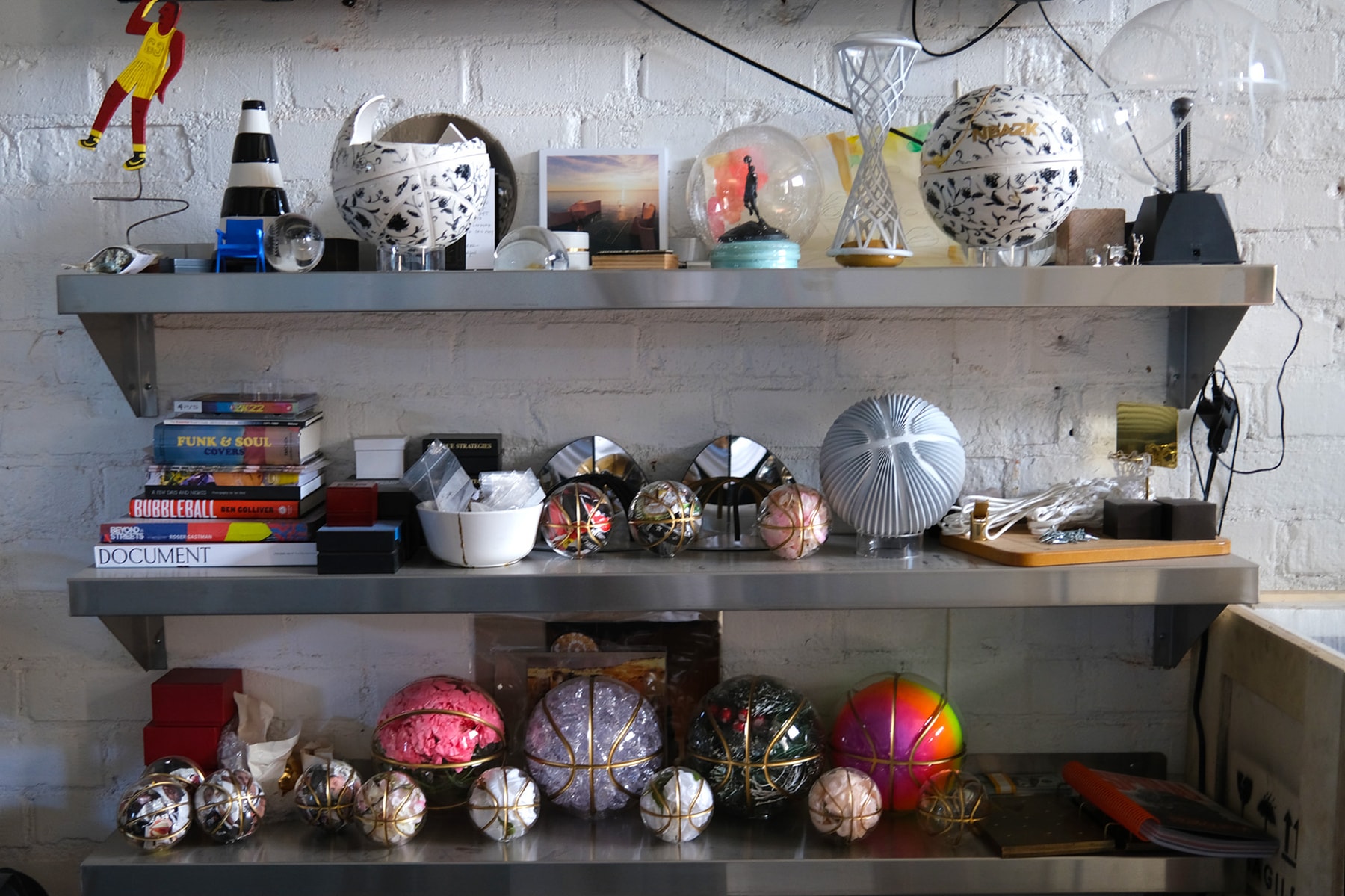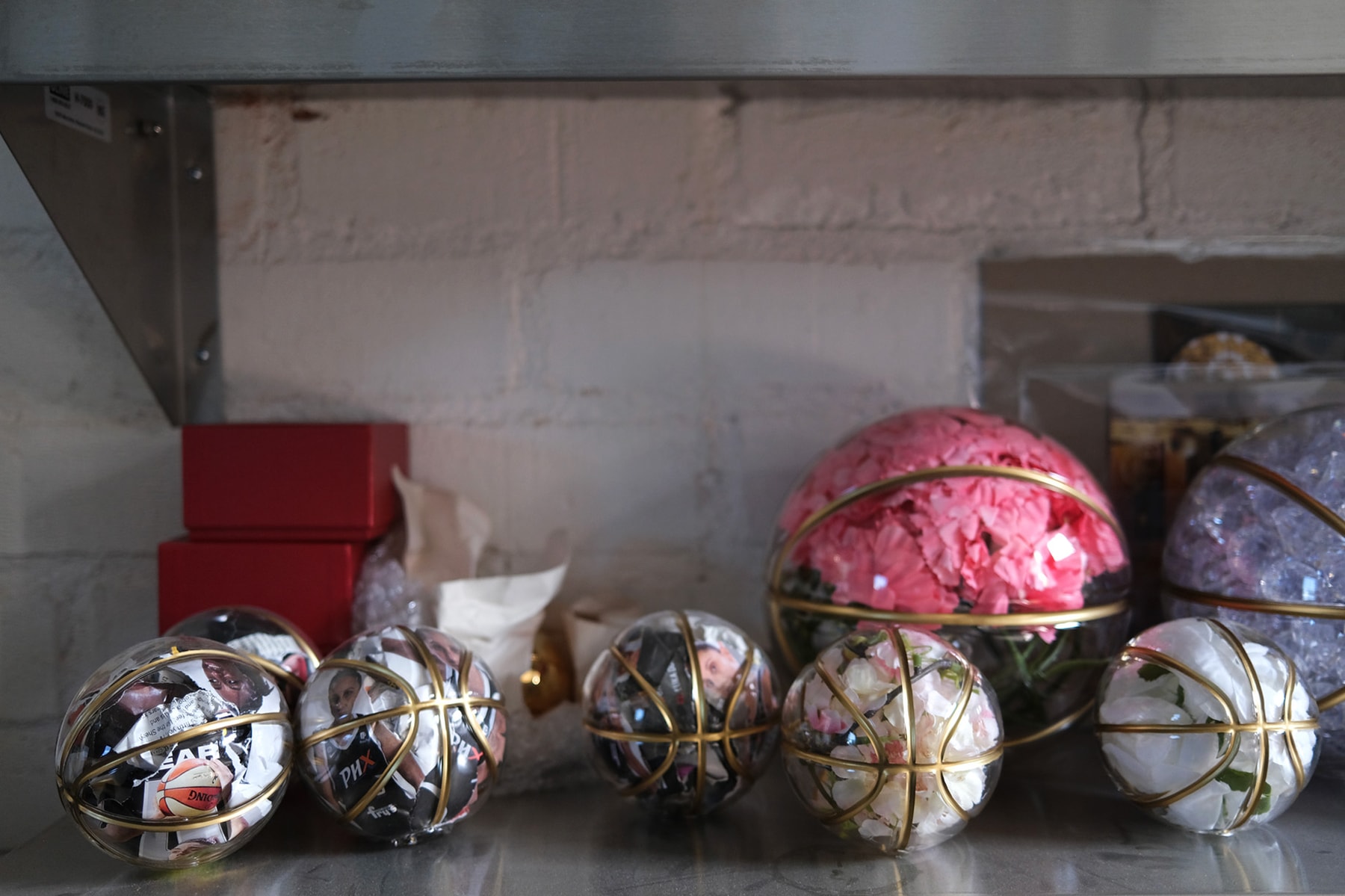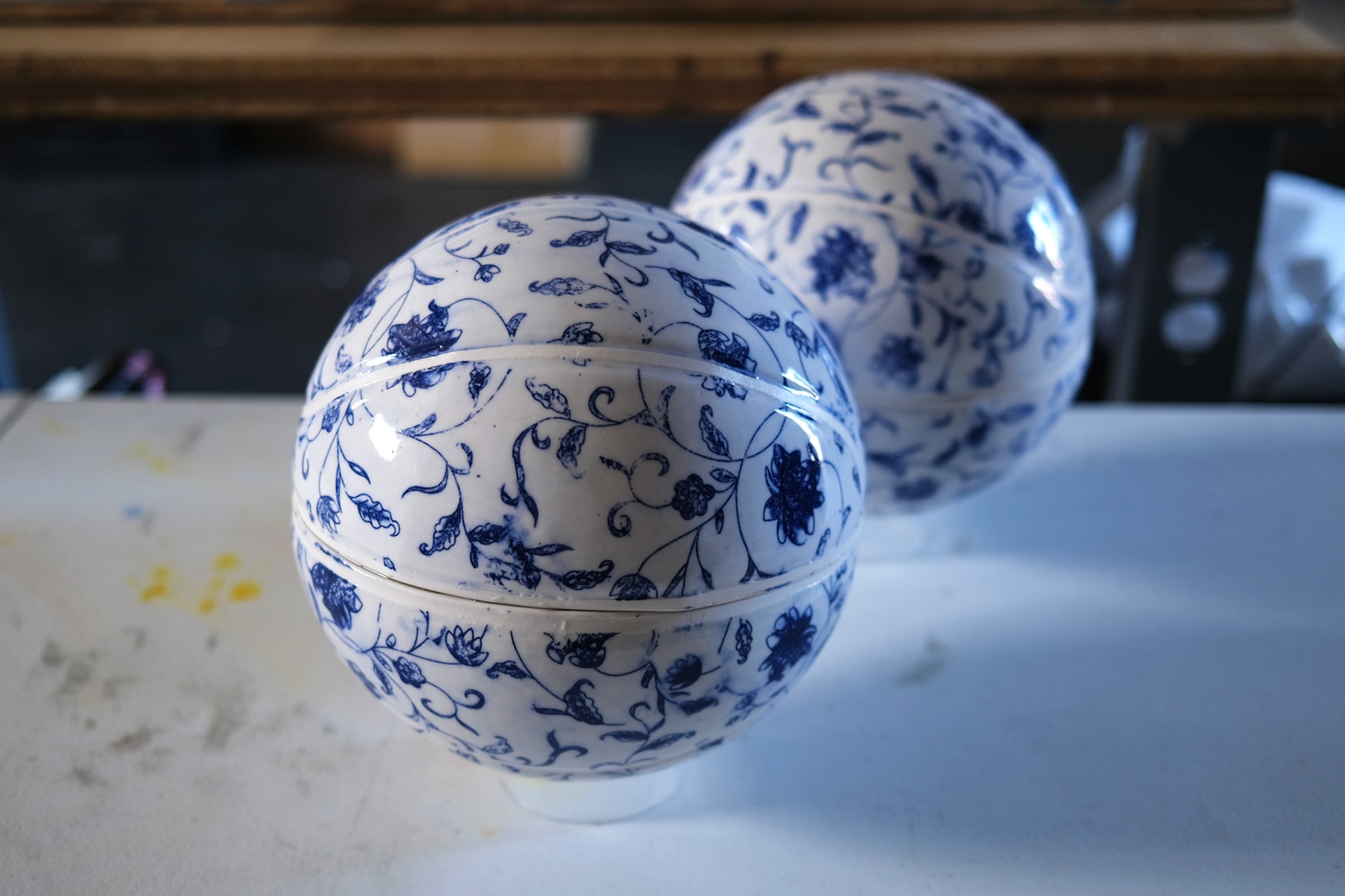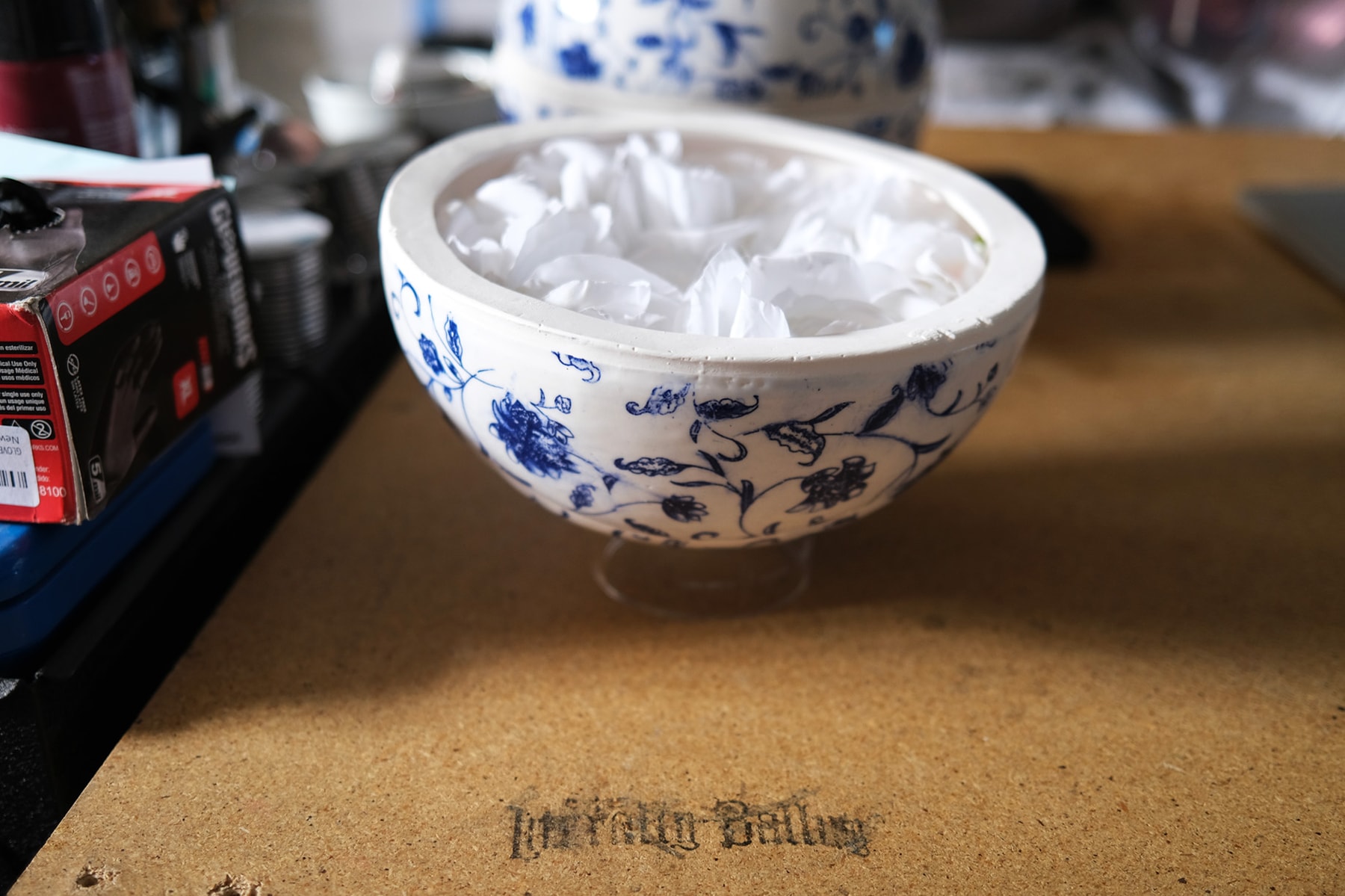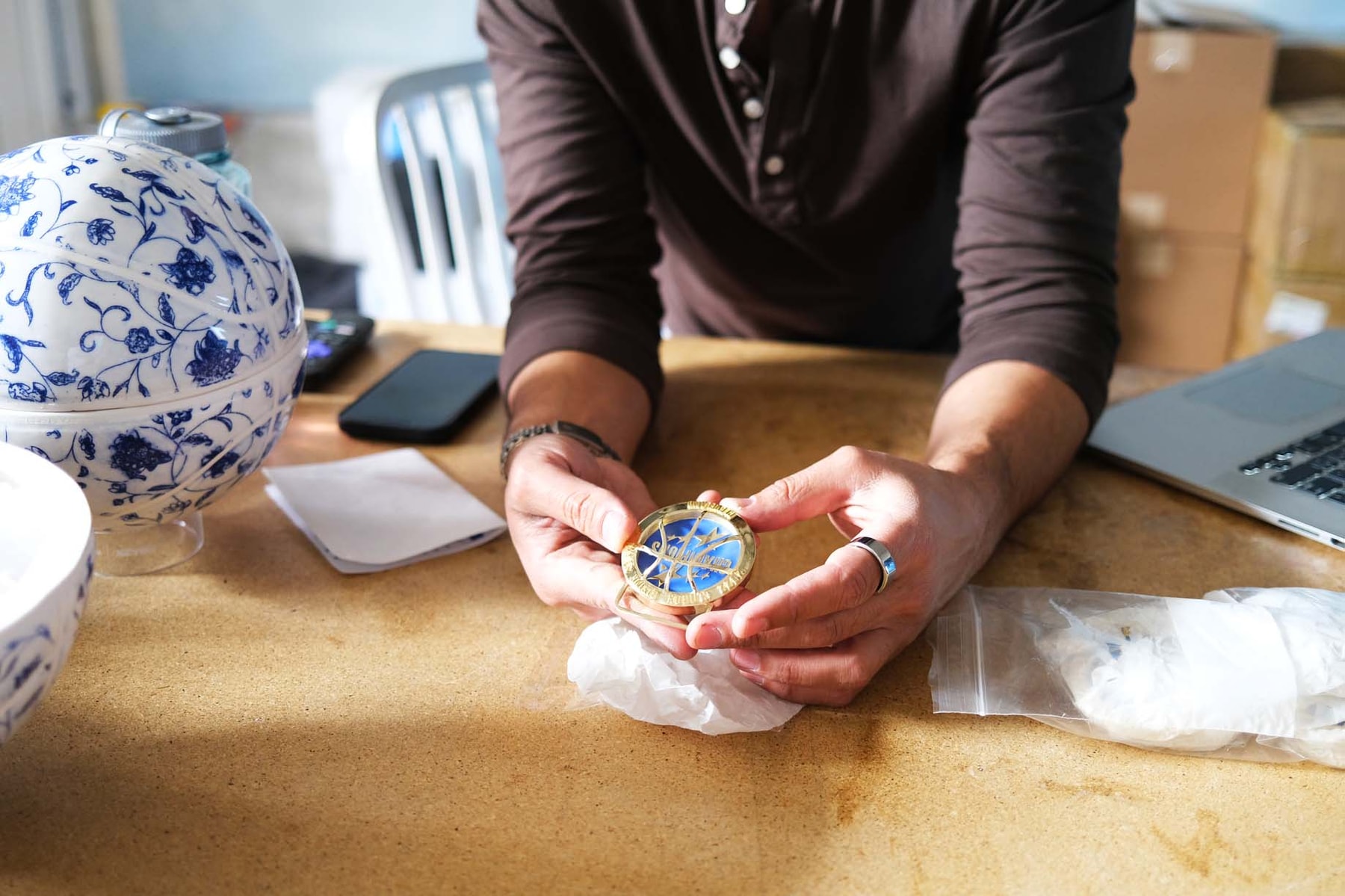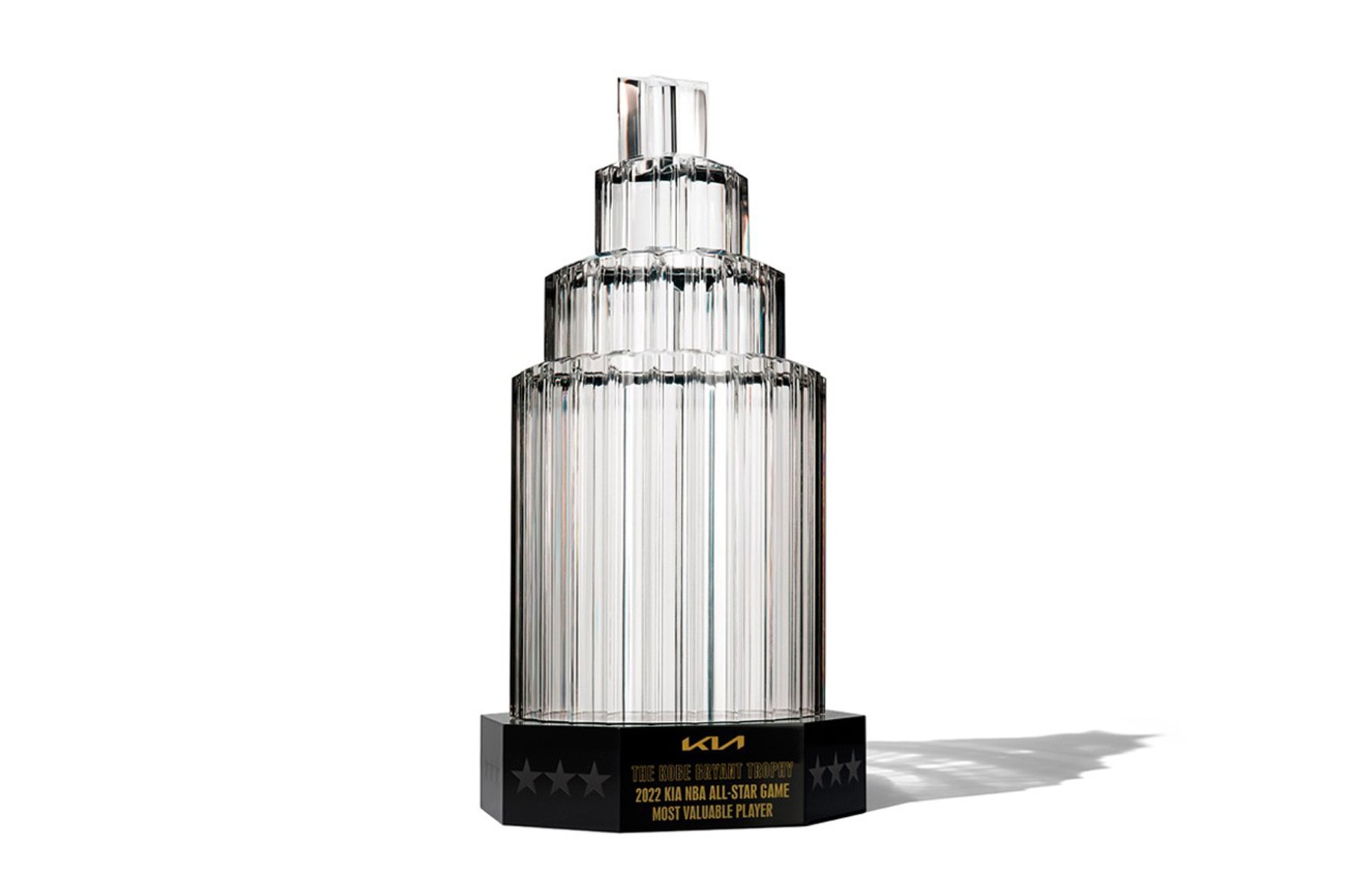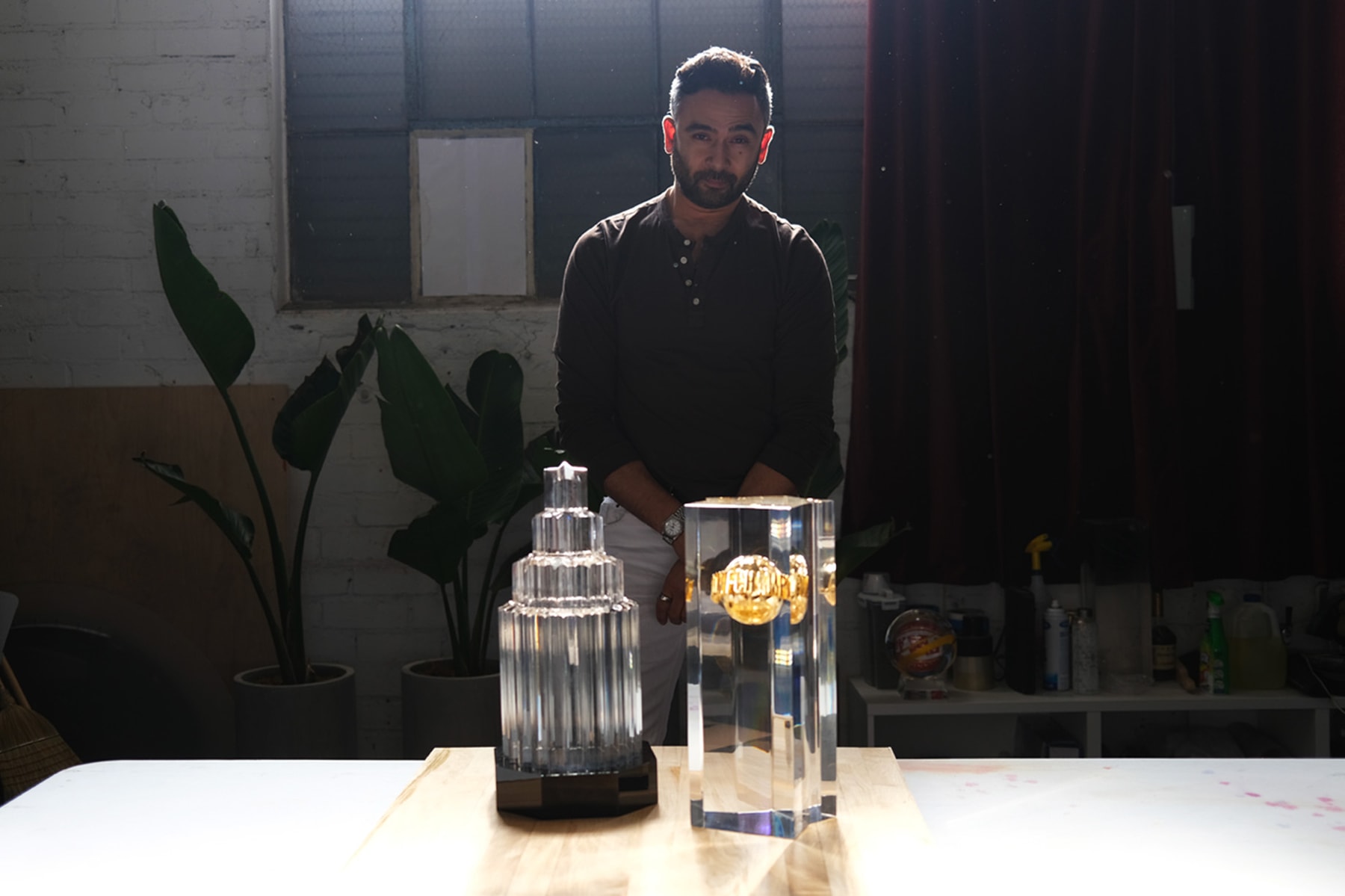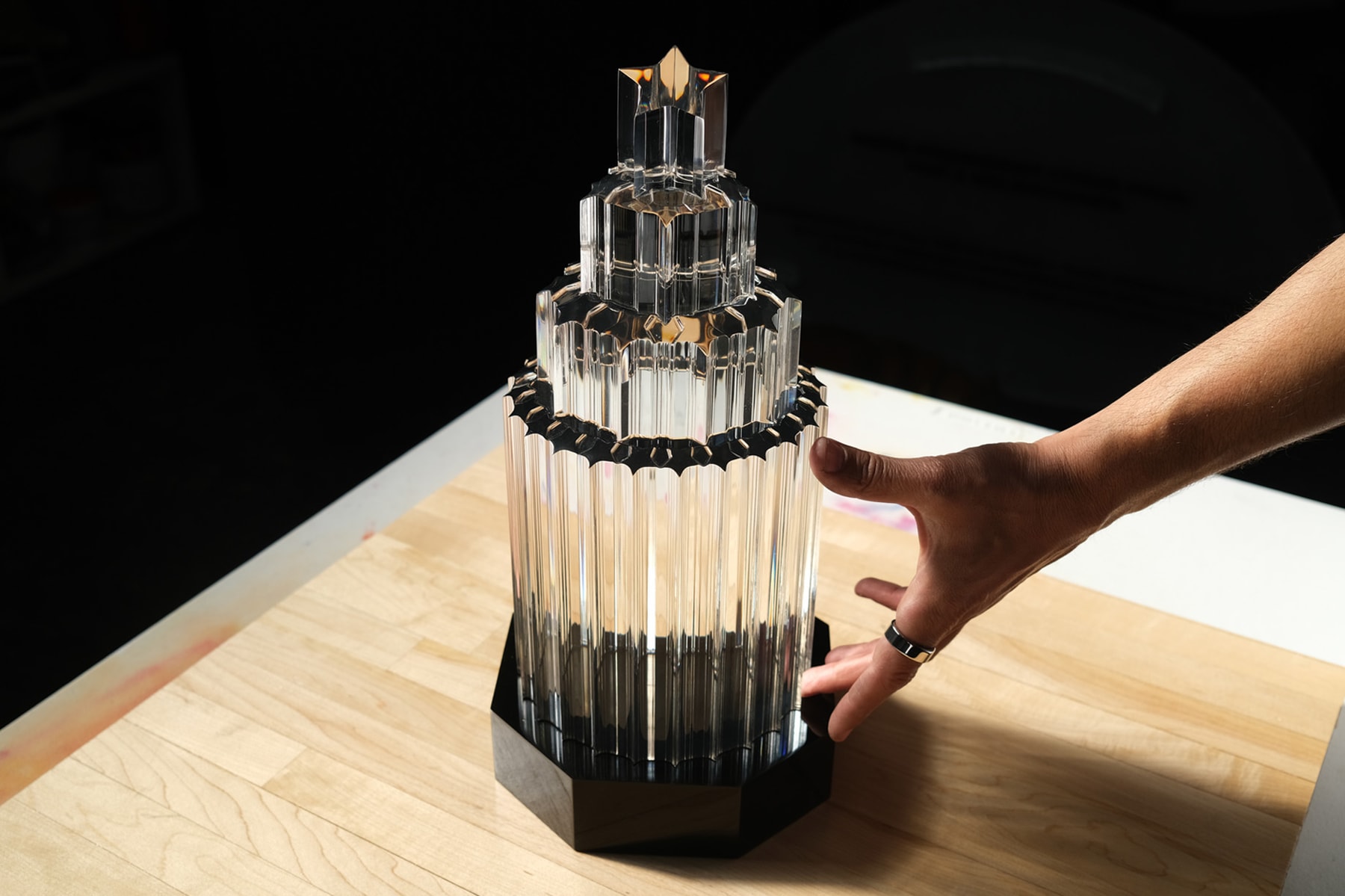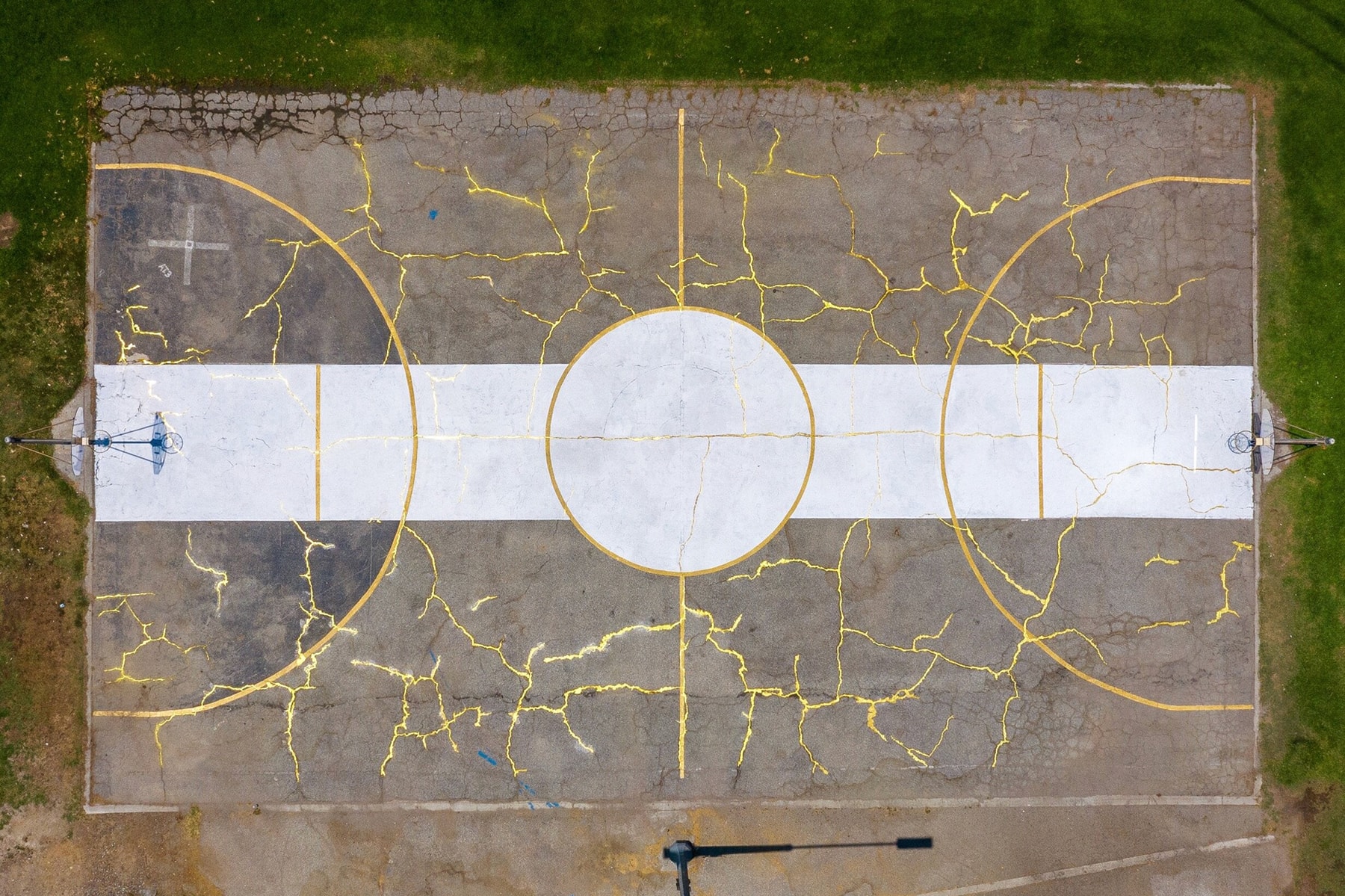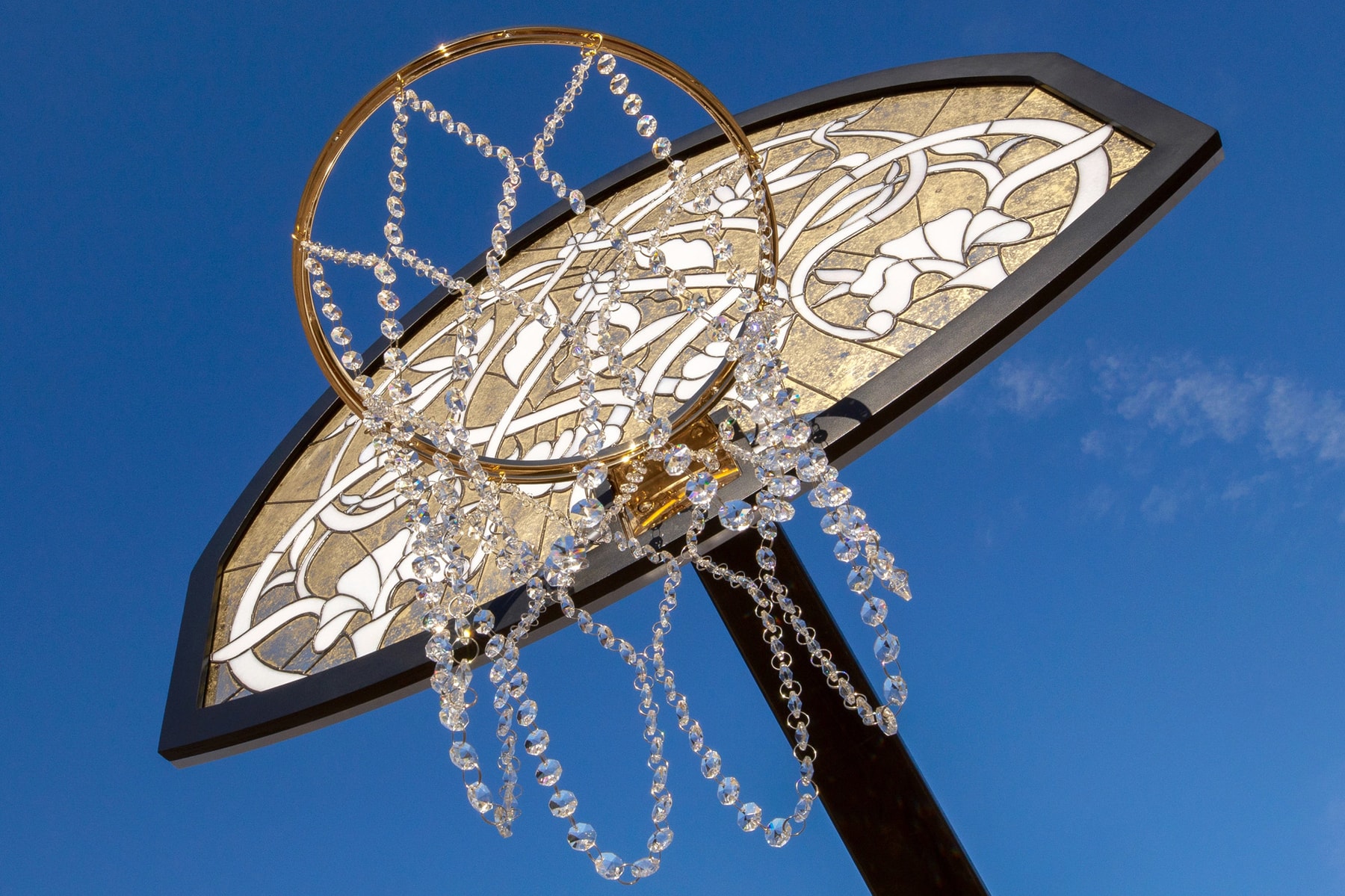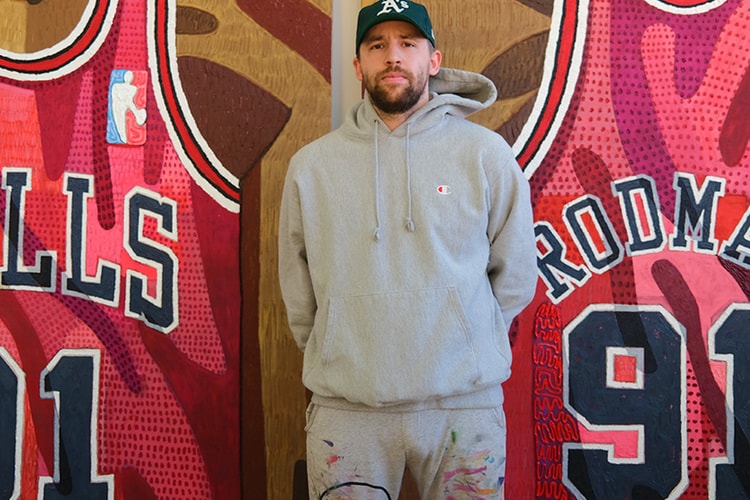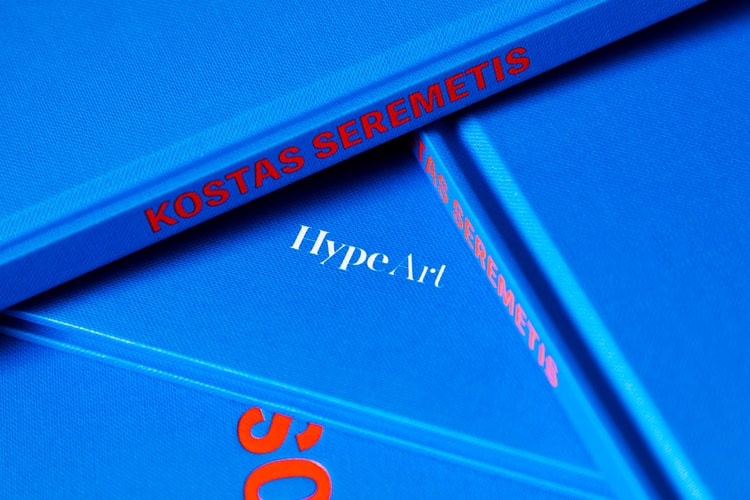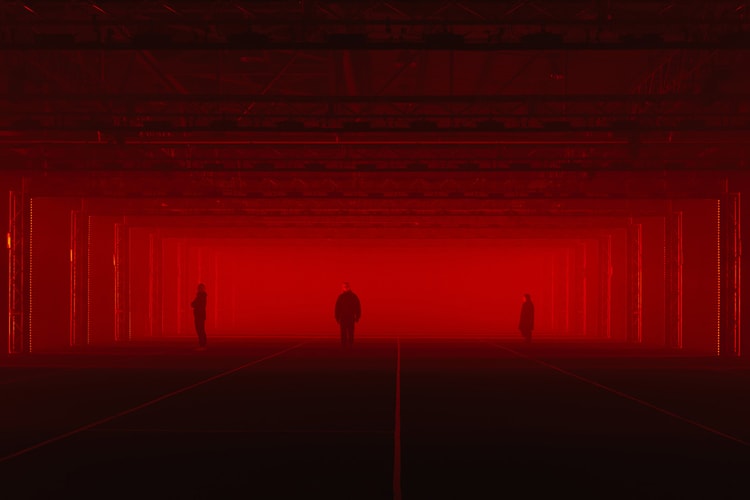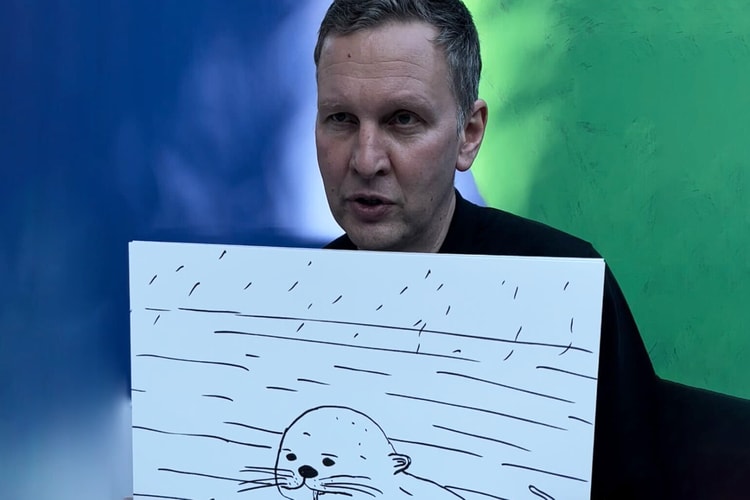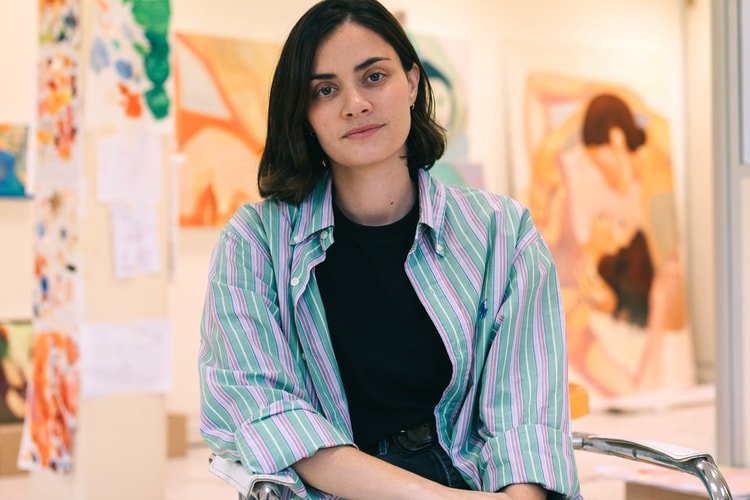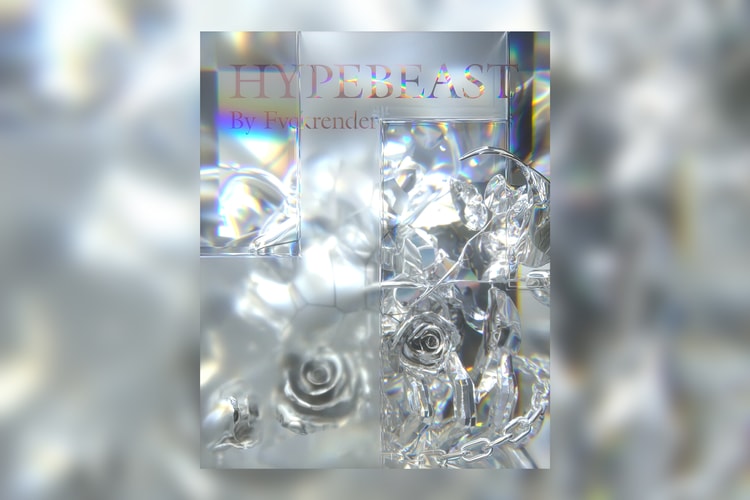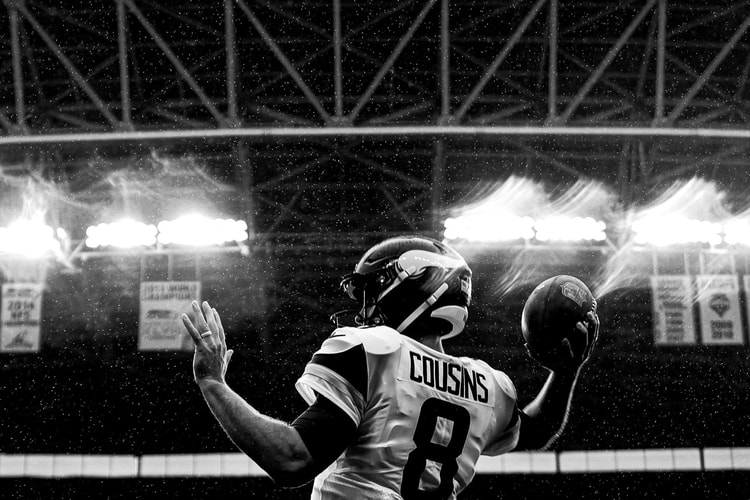

For an artist whose work emphasizes brilliance, it’s noticeably dark in Victor Solomon’s studio. The gradations of light, when reflected off one of his intricate sculpture, becomes all the more impressive. Tucked away in Downtown Los Angeles, the Boston transplant has cemented himself within the interesting realm between the worlds of art and sports.
Like many New Englanders growing up, Solomon wanted to play hockey, but due to the money needed to buy gear and play, he found a deeper affinity within basketball — a sport that only requires a ball and a makeshift hoop. “Within the basketball court, everyone was on the same page, because everyone had the same goal in mind,” Solomon told HYPEBEAST.
Having studied film, he drifted from Boston to the West Coast when he was 18 where he was doing a variety of projects. Still, he felt creatively bogged down by the structure of the profession — one that requires you to “mobilize so many people and so many resources to actually get an idea out into the world.”
“Sports, now more than ever, can be used as a platform to foster community.”
Observing the ornate sculptures in his studio, Solomon retraces the origins to San Francisco, where in the 1970s, artists began experimenting with stained glass as a means of creative expression. Fast forward to his early years in the Bay, Solomon ventured into one of these studios to buy supplies “and this one I walked into was this amazing hangout for old-timers in their 80s, who were al retired chilling and would go there every day to work — but mostly just to hang out.” Solomon ended up hanging out too, eventually becoming an apprentice and learning a number of age-old techniques that he’d first put to test on one of his emblematic backboard sculptures.
“I didn’t really have any ambitions to make anything of it,” said the artist, adding, “it was literally just a hobby, or things to do on the side, just a little distraction that I could do by myself with my bare hands.”
The artwork took off once he posted it on social media. Soon after, he’d showcase the sculpture at Art Basel in Miami, along with a solo show in New York and Los Angeles. Since then, Solomon has created work for a number of iconic hoopers, both past and present, but was most recently tasked to redesign the NBA’s All-Star Game trophies as part of the league’s ongoing 75th anniversary.
Following the successful showcase in Cleveland, I caught up with the artist to unearth his practice and why sports, now more than ever, can be used as a platform to foster community. Check out the full interview below.
“When you’re young, you just want to belong and be a part of a community.”
What was your foray into art?
There was always this bit of curiosity and creativity that was interesting to me. Early on, I was drawing and sketching and eventually I would try to make little films on our family’s video camera.
This was back in Boston?
Yup, but the process of drawing or making something was always interesting to me. At the same time running parallel, it was a very weird time to be in that developmental age in Boston as a brown kid. I didn’t feel like I had totally connected with the people around me because there were all the Italian kids, Irish kids, Jewish kids, while I was this Cambodian-Jewish kid. When you’re young, you just want to belong and be a part of a community. I just felt so far away from all the kids that I was around.
What sport did you first gravitate towards?
My family didn’t have a lot of money or resources…and Boston is a huge sports town, you know, and the thing at the time was hockey. I was dying to play hockey and there was this little mom and pop sporting goods store that I would walk by on the way to school everyday and I saw the mannequin in the window with all the gear and just thought it was the coolest fucking thing ever.
But the gear alone cost thousands of dollars and the time involved, being little too, it just didn’t make sense, but I was obsessed with it despite all the hurdles in the way. But basketball is clean, because you could just walk up and start playing. So we would start playing pickup basketball — summertime blacktop shirts and skins type shit. Within the basketball court, everyone was on the same page, because everyone had the same goal in mind. So it didn’t matter those differences that we might have off the court, [they] kind of all went away, because our ambitions were so pure and the meritocracy of sport is so clean. That always stuck with me as something that is really special of what basketball can do to bring the community together and what it brought to me.
“You tap into some frequency and everything clicks into place.”
So it’s come full circle.
Yeah, without getting too hippy LA or whatever, it’s just like, you tap into some frequency and everything clicks into place. I was fully pursuing a whole other career and then this thing just knocks the door down and I’ve been reading the wave ever since. I’ve been just trying to have fun with it and not trying to get in the way of it, but let it go where it’s taking me and fun along the way.
It’s been really fun creatively to set the boundaries of basketball — be operating within this very specific space with very specific set of aesthetic roles. That creates a really interesting creative challenge. What can I do to think about a basketball in a different way? What can I do to think about all of the icons of sport in a different way?
And then make some aesthetic rules for myself to where it’s like, okay, we’re dealing with these sorts of types of materials and these sorts of techniques, and really trying to be mindful of the storytelling that we’re bringing to all of these pieces. So it’s never just arbitrary. This thing is shiny, just because it’s shiny. It’s like, okay, this stained glass had historically been this technique that like kings in churches would use to showcase their wealth and power over the, over the community and these basketball players have that status now in culture.
So the bit of irony of this kind new money reaction, to stunt and flex, like those kings and churches did back in the day to flex that stature. But the irony in that is you have to give back the objects functionality in the process. I think there’s a very poetic story to be told about some of the trappings of fast acceleration, but also on the on the more optimistic side, I think it also shows sort of the destination of what’s possible in using sport as the vehicle in the platform to ascend to a new level.
Can you talk about how you approached the NBA All-Star trophies?
I had this reflection of wanting to define what the goals were and wanting to figure out what the destination in mind was. With basketball being this clean platform for development and meritocracy, I was already trying to celebrate what the top tier echelon was with my work, so it made so much sense to try and reinterpret trophies.
But the stakes are so high and there’s so many people invested in what’s happening here that need to bless it, because it’s such a big milestone and such a meaningful thing. They haven’t touched a lot of these trophies for like, 35 years.
The trophy is the thing that represents the pinnacle of this lifelong journey that these guys are pursuing in the gym since they were 10 years old. My philosophy when I was trying to sell the idea to the NBA was: this should be better. It should be more impactful, more meaningful. This is no shade on what it had been, but part of what’s exciting to work with the NBA is that they have the creative ambition to understand, ‘we should be elevating these honors in a way that no one else is.’
I’ve been working with Chris Arena from the NBA who is leading the efforts there. There’s one approach where everyone has the exact same thing, like the Oscars. But I think the NBA really had the creative ambition to put a lot of effort into the storytelling and using the idea to lift the the previous 75 years to inform the next 75.
What’s the next era? We had a call the other day talking about ‘what’s the trophy look like in 2122?’ Which is wild to have someone so mindful of what we’re building for the long term.
“I can’t remember the last time a public figure had such an impact on people.”
How about the Kobe Bryant Trophy?
You’re an LA guy, so you were probably impacted more than most people, because you’re actually from here and were present for his whole time. I’m a Boston guy, like, that was the enemy. But it was always a respect, you know? I’ve been down here for five years now and even though those five years were kind of the back side of his career, his impact was still felt everywhere.
I actually did a shoot with Kobe with HYPEBEAST. He had already retired from that point, but he still had the same sort of incredible discipline, and just had a cold calculating execution on some very sophisticated content.
When he passed away, it was such an Earth-shaking moment. I can’t remember the last time a public figure had such an impact on people. I don’t know if it was because how accessible he was when he came into the league or that we all kind of grew up with him in the league. He was kind of early to be accessible in the way that players are these days via social media.
In terms of basketball, he was also this bridge between the old world and the new. Where you had Jordan and the ‘80s/90s basketball era and then you had Kobe from ’96 on, who segued into the new generation with Lebron, Melo, etc.
That’s an amazing point that really articulates what he brought to the game. There were people who tried to do the music or fashion stuff — and we have to be fair and say he didn’t really succeed in other things, but that he had the ambition to explore those things and everything he did with content, like the Oscars — he was always willing to challenge himself to push those envelopes, which was always inspiring.
There’s so much symbolism in the construction of the trophy itself. Can you talk further on this?
We really wanted to tell the story of Kobe’s legacy, specifically in how it pertains to All-Star Weekend. As we researched his career, it became very eerie. How serendipitous all these things organically told the story. So obviously the eight-sided base number, 18 stars for all his All-Star appearances; this space is two inches tall and he was the 2002 All-Star Game MVP; this is 24 stars for his number, but there’s also 24 players that go to the All-Star Game.
This here is seven inches, which he was the 2007 All-Star Game MVP. Then it goes up to ten, because of his two starting fives and then up to nine inches because he was the 2009 regular season MVP. Then up to five trophies from one team, then back up to 11 for his 2011 All-Star game MVP, finally to one — his sole MVP.
So the story is referencing his evolution from 24 to 1 while nodding to his great lineage the whole way up.
It’s not just a pretty thing for the sake of a pretty thing.
When you first started designing this trophy, was there a particular idea that helped you along the conceptual process?
The seed of this idea came from Chris Arena and I couldn’t be more proud of where we got to with everything. We had every trophy of the league set out on one big table. So there’s an aesthetic consistency and cohesiveness with the universe that we’re trying to build. This is a nice entree to what’s going to happen later down the road.
What about the decorative courts you’ve worked on. Can you talk us through the process of those?
It’s been a really fun creative experiment to have to set myself with the constraints of basketball in the best possible way. And then try to explore what we can do to push the envelope or do what hasn’t been done, or try to contribute to the dialogue around the sport, however way we can.
That has clarified my vision creatively. A lot of incredible artists are in weird spot because they can do whatever they want. So there’s a blank canvas, literally and conceptually, and there’s a beautiful openness to that. But that seems so daunting to me. It’s nice to have, pardon the pun, a court within to play, right? So it’s like, okay, we know the rules are around basketball — How do we play with that? How do we challenge and disrupt that?
I think the Kintsugi work has been one of the most meaningful things for me, because it encapsulates so perfectly what I’m trying to do with the project — elevate the icons of sport with a sort of historically significant technique that has a parallel reference point to sport itself and a conversation and story to be told about it.
Like I was saying, it’s not just a pretty thing for the sake of a pretty thing. Obviously, we want it to be beautiful, but there are all these other checkpoints that it needs to hit along the way. Kintsugi touches on all those notes — from the symbolism of the technique and its representation of rebuilding the broken elements and being better for it on the other side — I feel is a very appropriate parallel to the athlete’s journey.
So we started with the basketball, then the logical next step was to take that into a court and try to explore that technique on a bigger surface of the actual physical basketball court. I felt like there was a great story to tell there because the basketball court in my mind and in everything that I’m doing is this platform for which everyone can elevate from, and the court kind of sacrifices itself along the way, because it’s hardtop and you know, kids are beating it up, they’re playing on it all day, it’s sitting in the sun.
So if you give the court a personality, it’s sacrificing itself for you to elevate off of it, which I felt like was very, like a very kind of like anthropomorphizing the court in a way. But I felt it was nice for us to pay tribute back to the court — in celebrating all the cracks that we put into it in our journey, but highlighting them in gold as a sort of thank you to the sport.
“All these creative challenges, I feel parallel a basketball player, an athlete.”
What materials do you work with?
We’re basically technique agnostic. Whatever way the project is set up is meant to give us the flexibility to say, ‘you know what? This concept requires us sewing a huge piece of silk or learn how to make kintsugi stuff.’ Creatively, that’s something that’s exciting and fun for me to challenge myself and say, ‘Okay, how do we make a candle?’ Let’s figure out the vessel. Let’s figure out the trophies.
All these creative challenges, I feel parallel a basketball player, an athlete. It’s like, let me work on my three-point shot. Let me add some handles. So I think that that parallel journey is there, again.
Who are some of your favorite players, past and present?
I was a big Rondo guy. That 2008 Celtics team that got us the championship after so long was really special. Everyone was like a Pierce or KG guy, but for whatever reason I liked Rondo. Maybe because he was the quiet guy, kind of a weird guy and I think he was pretty early and forward to thinking about fashion. And he’s kind of like a savant — a genius in this way that I think was interesting. So I was always like, ‘That’s my guy.’ I just related to him.
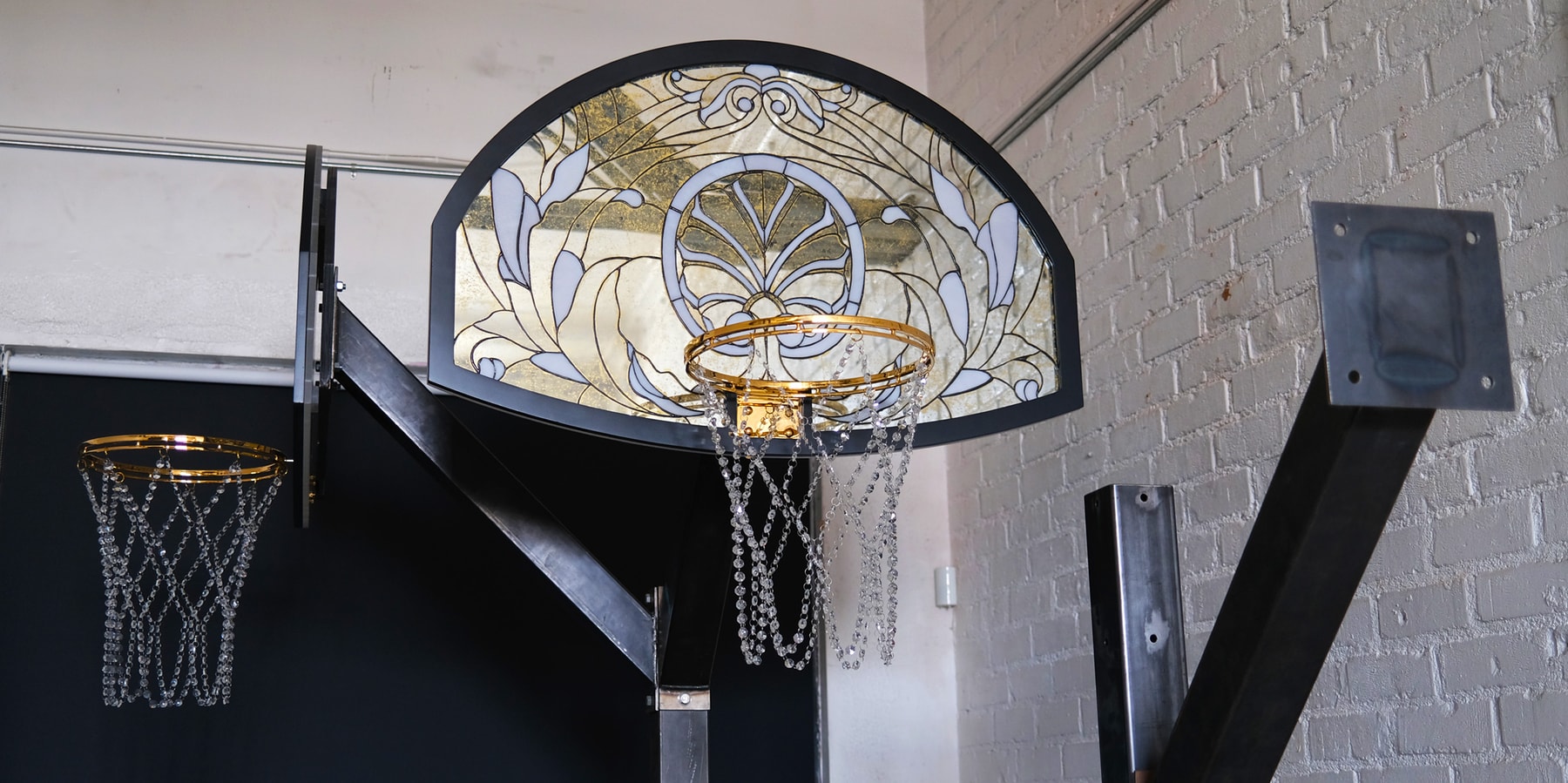
Despite going into art as a filmmaker, Victor Solomon is busy at work with his newfound career. Having worked with the NBA, UNINTERRUPTED and a number of promising players in the field, the LA-based artist looks to further elevate the often overlooked aspects of basketball. Stay up to date on Solomon’s work at Literally Balling.




